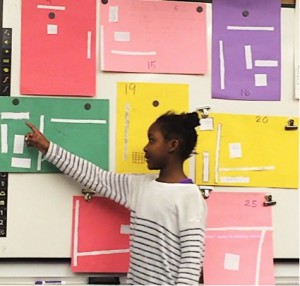Today and tomorrow parents and teachers are sitting together for spring conferences and having rich conversations about lower school students. April conferences can be celebratory. There is such a span of growth and so much work to consider from September to April: the stories and poems they’ve written, the math projects they’ve persevered through, the self-portraits they’ve created, the block buildings they’ve erected, the great thinking they’ve done, and the collaborations they’ve experienced.
What to share with your child when you get home? The simple answer is share all of it. The meaning and importance of the home-school connection is reinforced for children when they hear about their parents and teacher getting together and talking. The trickier question is how to praise your child for their accomplishments and growth at school in ways that build confidence and genuine self-esteem rather than inadvertently undermining it. We’ve all heard the warning against over-praising to avoid raising “praise junkies,” but then how to go about it instead? I recommend praising, highlighting, noticing, and talking about the following: effort, persistence, hard work, and making mistakes and learning from them. There will be plenty of examples from your parent-teacher conference, but if you take this advice to heart, you can apply it in ordinary daily opportunities as well.
Stanford psychologist Carol Dweck has conducted extensive behavioral research that shows that “when we praise children for their intelligence, we tell them that this is the name of the game: Look smart, don’t risk making mistakes.” She counsels parents and teachers to help students focus on how hard they’ve worked rather than on how smart they are. She illustrates how this encourages students to work more tenaciously, take risks, and achieve more. “Emphasizing effort gives a child a variable that they can control,” Dweck explains. “They come to see themselves as in control of their success. Emphasizing natural intelligence takes it out of the child’s control, and it provides no good recipe for responding to a failure.” One piece of practical advice Dweck offers is for parents to regularly share mistakes they’ve made and how they learned from them. She’d like to see a world in which your family’s typical dinner table conversation routine on Friday night is to ask each other, “What mistakes did you make this week? Let’s celebrate those!”
To read more about Dweck’s research, compelling experiments, and advice for parents, check out her terrific book
Mindset, or read this not-so-new but very good
article about it. Meanwhile, remember to tell your child how apparent their hard work and effort was to you in all the projects and anecdotes their teachers shared at conference. And if you’re really brave, even consider telling your child how much you enjoyed seeing all the wonderful mistakes in their work!















